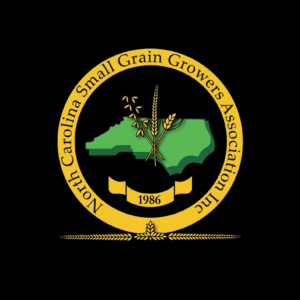How Can Farmers Export Grain Out of NC?
go.ncsu.edu/readext?870034
en Español / em Português
El inglés es el idioma de control de esta página. En la medida en que haya algún conflicto entre la traducción al inglés y la traducción, el inglés prevalece.
Al hacer clic en el enlace de traducción se activa un servicio de traducción gratuito para convertir la página al español. Al igual que con cualquier traducción por Internet, la conversión no es sensible al contexto y puede que no traduzca el texto en su significado original. NC State Extension no garantiza la exactitud del texto traducido. Por favor, tenga en cuenta que algunas aplicaciones y/o servicios pueden no funcionar como se espera cuando se traducen.
Português
Inglês é o idioma de controle desta página. Na medida que haja algum conflito entre o texto original em Inglês e a tradução, o Inglês prevalece.
Ao clicar no link de tradução, um serviço gratuito de tradução será ativado para converter a página para o Português. Como em qualquer tradução pela internet, a conversão não é sensivel ao contexto e pode não ocorrer a tradução para o significado orginal. O serviço de Extensão da Carolina do Norte (NC State Extension) não garante a exatidão do texto traduzido. Por favor, observe que algumas funções ou serviços podem não funcionar como esperado após a tradução.
English
English is the controlling language of this page. To the extent there is any conflict between the English text and the translation, English controls.
Clicking on the translation link activates a free translation service to convert the page to Spanish. As with any Internet translation, the conversion is not context-sensitive and may not translate the text to its original meaning. NC State Extension does not guarantee the accuracy of the translated text. Please note that some applications and/or services may not function as expected when translated.
Collapse ▲*This project is funded by the NC Small Grain Growers Association in an effort to address the declining wheat acres in the state by exploring potential new markets to sell wheat and create new competitive revenue streams for our growers. This project is not meant to replace existing markets but to enhance wheat production in the state by creating new ones.* – NC Small Grain Growers Association 
How Can Farmers Export Grain out of the NC Port of Wilmington?
The North Carolina State Ports Authority provides a safe and efficient facility that can move products from the field to the overseas market. In this short video, you are given an inside look into options for exporting grain and what the processes are.
There are three main steps in this process:
Step 1: Containerizing Grain
At this time any grain exported out of the port must be containerized. To accomplish this there are a few options a farmer or elevator can choose. One option is to book the container yourself. An empty container is delivered to your grain facility to be filled. Then you would truck it yourself to the port where the container will be put into to be a stack until it is loaded onto a ship. Another option is to use a transloader. Generally transloaders provide a service where they move freight between multiple transportation modes. In this case the transloader is someone who has the equipment to take the grain from a farm truck and then transfer it into a container.
Step 2: Make a Booking
When it comes to making a booking, companies in the industry can help with logistics. They are called Freight Forwarders and can act on your behalf and book a space for your cargo on your desired ship. These companies often provide a variety of services for shippers – including preparing customs paperwork. Freight Forwarders often specialize in shipments to particular geographies, specific transportation modes, etc. So each freight forwarding company is different and may have different offerings. In general, freight forwarders can tell you how much the process will cost, arrange the trucking, and be as involved as you want them to be in the process.
Step 3: Deliver to Port
When the driver with your filled container arrives, they will be entering a busy terminal area where many other containers are either coming or going. Fortunately, Port of Wilmington offers a fully automated system through their community access portal. This allows the different people involved in this process to input information about their shipments. When the truck arrives, it will be matched with your booking information so the container can be processed through the interchange lanes. After the interchange lanes, the container is moved out to the yards to be stacked and wait for the correct ship to arrive so they can load it. In addition to double-checking the information in the portal is correct before arriving at the port, it is a good idea for drivers to review the checklist available on the port website.
This video is the first in a series being developed by NC State University under the grant project “Advancing Sales and Marketing Opportunities for North Carolina Wheat” led by Dr. Heidi Schweizer, Assistant Professor and Extension Specialist in Agricultural and Resource Economics. Additional videos will include recipes for using locally produced soft red winter wheat and wholesale marketing information for small grain growers. We would like to thank graduate students Laura Schumacher and Yue Shan for their contributions to this video.


